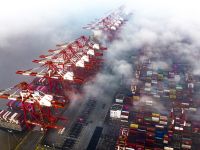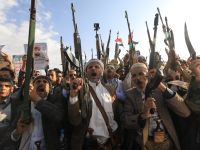Saudis have always had a better knowledge and understanding of the rest of the world than the rest of the world has had about Saudi Arabia.
The only fact that most outsiders knew was that the Kingdom held the world’s largest proven reserves of oil.
This, however, is changing rapidly — in no small measure because in recent years the government has gone out of its way to tell the international community about our country, about our Muslim culture and about our remarkable archaeological and historical heritage.
The most outstanding example of the way in which this more positive message is now getting across is the highly-acclaimed Roads of Arabia international exhibition, which contains remarkable artifacts demonstrating the Arabian Peninsula’s rich and varied past from the earliest times.
When it opened in Paris last year, it drew large and appreciative crowds, many doubtless attracted by the in-depth critical coverage in the French media. By 2013, the exhibition will have visited Barcelona, Berlin, St. Petersburg and Chicago.
Prince Sultan Bin Salman, head of the Saudi Commission for Tourism and Antiquities, has emphasized that the Kingdom is interested in attracting groups of knowledge tourists, who wish to see for themselves the peninsula's remarkable archaeological and cultural heritage.
However, he sees the major tourism emphasis will continue to be on attracting domestic visitors to cultural and leisure locations. In terms of GDP, Saudi Arabia generates only six percent of its income from tourism. With the new facilities under construction or planned this will increase and along with the expansion will come new jobs and opportunities for private businesses. The prince makes the point that many Saudis currently choose to vacation abroad. However, new leisure resorts on the Gulf and Red Sea coasts and in the fine mountain scenery around Taif and Abha are designed to offer citizens the chance to relax and unwind, with facilities that have not existed widely in the Kingdom until now.
We are of course well used to welcoming visitors from overseas with some three million coming annually for the Haj. There is also a growing number of so-called “medical tourists” who come to take advantage of our state-of-the art medical facilities. Meanwhile, more and more foreign businessmen are arriving to assess the new opportunities for investment in the Kingdom.
The subtext of the present drive by the Commission for Tourism and Antiquities is that Saudis and expatriates living in the Kingdom should be finding out more about the country and its fascinating historic heritage. Many important sites are now equipped with first rate interpretation facilities. Yet there is an irony which is epitomized by what has been happening in the old parts of Jeddah. For years wonderful old buildings have been allowed to rot and decay. Some have been burned down. The problem has been that these beautiful houses are expensive to maintain, unattractive to live in and sit on prime development land. At the present rate, most will soon be gone. The authorities need to step in and enforce the preservation and restoration of these priceless historic properties.







